Table of Contents:
- Introduction
- The significance of Mixquic in Mexican culture
- History of Mixquic’s Day of the Dead celebrations
- Traditional customs and rituals during the Day of the Dead
- The artistic elements of Mixquic’s celebrations
- Famous attractions and events in Mixquic
- Tips for visiting Mixquic during the Day of the Dead
- Conclusion: The enduring beauty of Mixquic’s celebration of life and death
- Informative Video
Introduction
When people think about Mexico, they imagine colors, music, food, and traditions in every street. Mexico is not only about today. It also remembers the past in special ways. The culture has many symbols that show respect for family, community, and the circle of life. In every town, you can find stories. These stories are told not only with words, but also with songs, decorations, and shared moments. Many of them are old and come from ancestors. They are passed from parents to children and continue to guide the identity of the people today.
Travelers from all over the world visit Mexico to feel this connection. Many want to see how the country celebrates life. They want to know how traditions keep families close to their ancestors, and how art and spirit are part of daily life. Visitors look for places that are not only beautiful but also meaningful. Mexico has many destinations where culture and history meet. Each one is unique. Some are famous for food, others for music, others for buildings, and others for spiritual practices that invite people to think and show respect.
One of these places is in the area of Mexico City, far from tall buildings and busy streets. Here, life feels slower and traditions feel stronger. The streets are small, the houses simple, but the sense of community is very big. Local people welcome visitors not as strangers, but as friends who can join in what belongs to everyone. It is not only about watching, but also about feeling, sharing, and learning. Small things are very important: a candle in the corner, a song in the air, or a handmade item in the market. Together, they create an atmosphere that speaks without words.
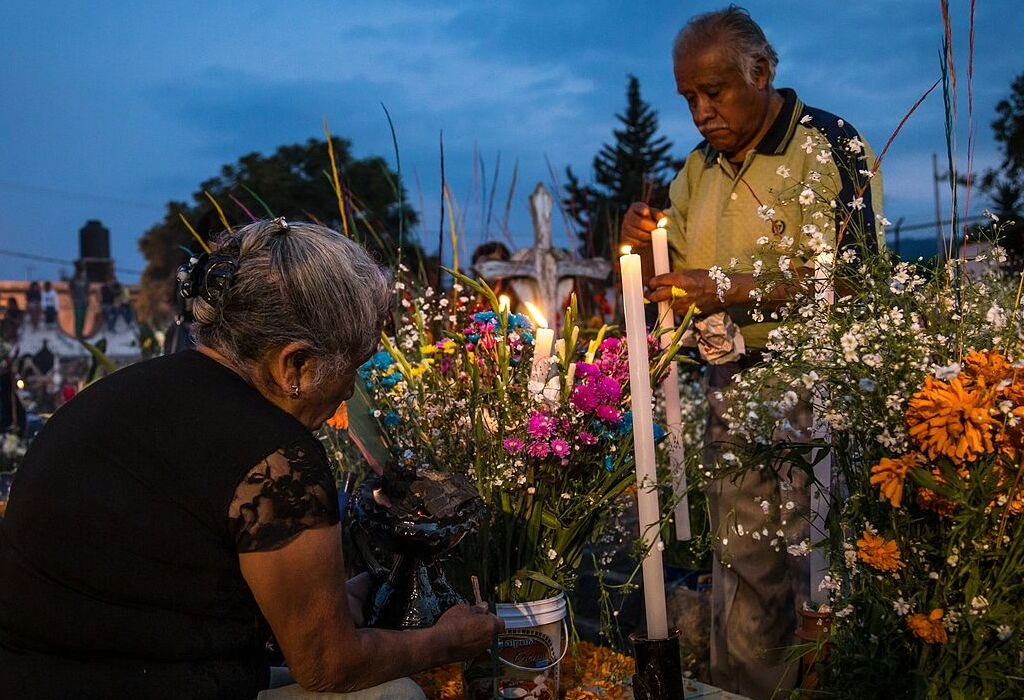
For travelers who want to see something authentic, this type of place is perfect.
It is not about luxury hotels or shopping malls; it is about walking, observing, and opening the heart to understand another way of seeing the world. It is about going into a neighborhood where people are proud of their roots and happy to share their traditions with anyone who shows respect. Even if you don’t speak Spanish, you can feel the message through gestures, smiles, and the rhythm of the environment.
This article is a guide to one of those communities. It explains why the area is important, how the celebrations began, and what visitors can expect to experience. But before diving into the details, it is useful to think about why such traditions matter so much to Mexico as a whole. In Mexican culture, the idea of community is always present. People do not live only for themselves but also for their families, neighbors, and ancestors. Celebrations are not just events; they are ways to strengthen relationships, to teach the young, and to honor the old.
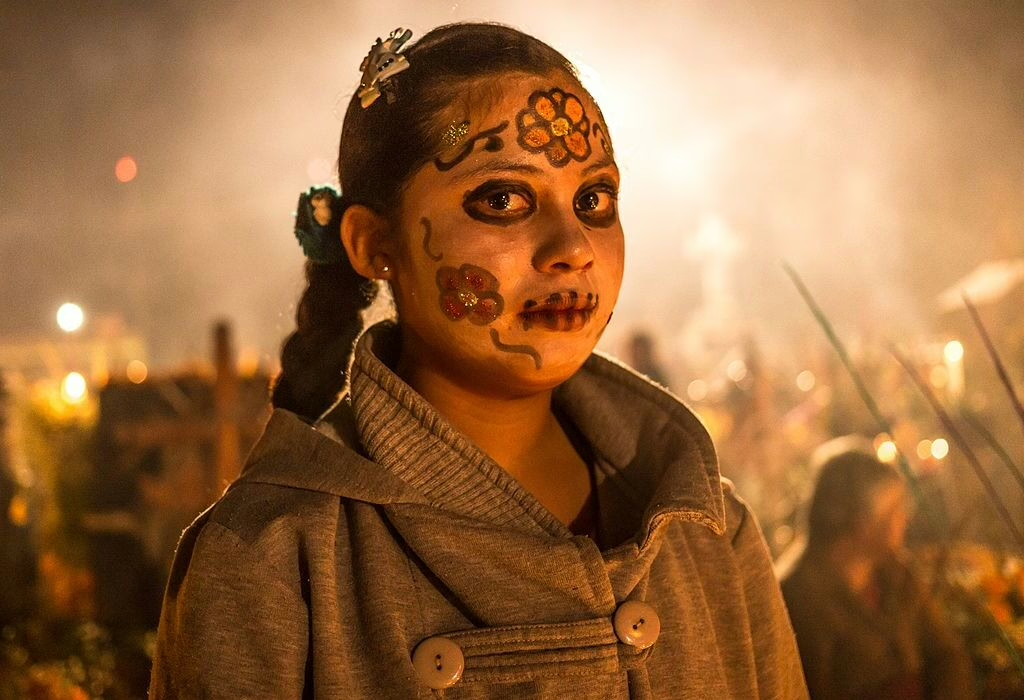
In a globalized world,
where many cities look the same and technology often replaces face-to-face connection, a place like this offers something rare. It reminds us that humanity is not only about progress and speed but also about memory and meaning. Travelers who go there usually describe their experience as emotional and unforgettable, not only because of what they see but also because of how they feel. The combination of atmosphere, people, and cultural depth creates a memory that lasts for years.
Another important point is accessibility. Since the location is not far from the heart of Mexico City, visitors can plan a short trip and still experience something completely different from the city center. The journey itself is part of the adventure, as you move from busy streets into calmer, more traditional spaces. For those who like to explore beyond the usual tourist spots, this is an excellent choice. It allows you to connect with locals, taste regional food, and witness traditions that are not staged for tourists but lived by families with sincerity.
Finally, this introduction invites you to read the article with curiosity and respect. As you go through the sections, you will discover history, customs, art, and travel tips. But more than information, think of it as an invitation to open your senses to a unique cultural world. Whether you plan to visit in person or simply want to learn more from home, the story of this place can inspire you. It is about understanding how life and memory connect, how people keep their identity alive, and how traditions can become bridges between the past and the future.
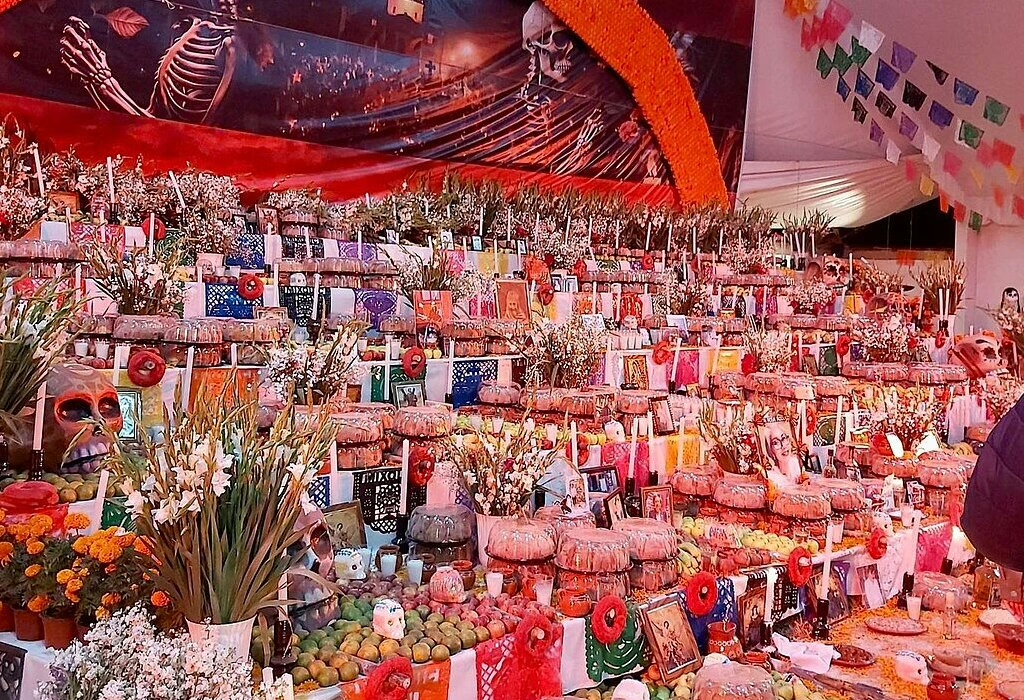
The significance of Mixquic in Mexican culture
Mixquic holds a special place in Mexican culture. It is one of the most important destinations for celebrating the Day of the Dead, an annual event deeply rooted in Mexican traditions and beliefs about death and the afterlife. For the people of Mixquic, the Day of the Dead is not something to be sad for but rather a colorful celebration of the lives of those no longer here on Earth.
The town’s name, Mixquic, translates to “Place of the Clouds” in the indigenous Nahuatl language. Its location adds a mystical atmosphere that makes the celebration more magical and enchanting. Check out our Mixquic Dia de Muertos: Day of the Dead Tour (9 h).

History of Mixquic’s Day of the Dead celebrations
The roots of Mixquic’s Day of the Dead celebrations date back to pre-Columbian times when the indigenous cultures of Mexico held elaborate rituals to honor their ancestors. These rituals were later merged with Catholic traditions (syncretism) brought by the Spanish conquistadors, creating a unique blend of indigenous and European customs that still define the celebration today. Check out our article about Holy Week.
According to legend, the Day of the Dead was originally in the ninth month of the Aztec calendar, roughly corresponding to August. However, when the Spanish came to Mexico, they moved the celebration to coincide with the Catholic All Saints’ Day and All Souls’ Day on November 1st and 2nd. This fusion of indigenous and Catholic traditions gave birth to the beautiful celebration we know as the Day of the Dead. Check out our post: Day of the Dead in Mexico City (The Easiest Ultimate Guide).

Traditional customs and rituals during the Day of the Dead
The Day of the Dead in Mixquic is a time for families to come together and honor their ancestors. The celebrations begin on October 31st with the arrival of the spirits, who come back to Earth to reunite with their families and spend one more time by their side. Families clean and decorate the graves of their ancestors, often spending the entire night in the cemetery, lighting candles and singing songs.
One of the most iconic symbols of the Day of the Dead is the Calavera, or sugar skull. These skulls are made from sugar and have colorful decorations that you can eat. The families put these skulls on the altars along with photographs and personal belongings of the deceased, symbolizing their presence during the celebration.
Another vital element of the celebration is the ofrenda (altar), or offering. Families create impressive altars in their homes with marigold flowers, candles, incense, and their ancestors’ favorite foods and drinks. The altars are to welcome the spirits and provide them with something to eat and comfort during their visit.

The artistic elements of Mixquic’s celebrations
The artistry in Mixquic is something you must experience and admire closely at least once in a lifetime. Artisans from all over Mexico travel to Mixquic during the Day of the Dead celebrations, sharing their talents with locals and tourists through various art forms.
Sugar skull sculptures are another work of art that not many places have. Artisans spend hours meticulously crafting these beautiful and colorful skulls. They use sugar, icing, and edible decorations to bring the skulls to life. Each skull is a unique creation. They often have the name of someone no longer here or with different designs and patterns.
In addition to sugar skulls, Mixquic is also renowned for its intricately woven crafts. Local artisans create beautiful tapestries, baskets, and other woven goods using traditional techniques passed down through generations. These crafts often have colors and intricate patterns, reflecting Mixquic’s rich cultural heritage.

Famous attractions and events in Mixquic
During the Day of the Dead celebrations, Mixquic comes alive with different attractions and events that will blow your mind. One of the highlights is the procession on November 1st: The “Mictlantecuhtli Parade.” In this parade, dancers, musicians, and giant puppets give tribute to the god of the underworld.
Another must-see attraction is the main square, a massive marketplace during the celebrations. Here, you can buy handicrafts, artwork, and traditional Mexican cuisine. The main square is also home to live music performances and dance shows.

Tips for visiting Mixquic during the Day of the Dead
If you’re thinking about heading to Mixquic for the Day of the Dead festivities, here are some friendly tips to make your trip better:
- First off, it’s super important to keep in mind that this celebration is really special to the locals. The Day of the Dead isn’t just like Halloween; it’s a heartfelt tradition for the people of Mixquic.
- Make sure to dress appropriately, especially if you plan on going into the church, and just be respectful while you join in on the festivities. It’s also a good idea to plan ahead since Mixquic gets pretty busy during this time of year.
- Try to book your place to stay and any transport you need way in advance so you can kick back and enjoy your visit. And just a heads up, you might have to wait in some long lines at popular spots and events, so be ready for that.
Conclusion: The enduring beauty of Mixquic’s celebration of life and death
Mixquic’s way of honoring life and death is more than just a celebration; it is a window into the heart of Mexico. Visiting this community gives you the chance to see how culture is lived in the streets, in the families, and in the small details that people prepare with so much care. It is not only about what you watch but also about what you feel. The atmosphere is powerful, emotional, and welcoming at the same time. For many travelers, it becomes one of the most memorable experiences of their trip to Mexico.
What makes Mixquic special is the balance between joy and respect. On one side, there are bright colors, music, and creative expressions. On the other, there is deep reflection, quiet moments, and gestures of love toward ancestors. This combination is rare in the world, and it shows how Mexican culture understands death not as the end but as a step in the circle of life. When you are in Mixquic, you can sense how people connect the past, the present, and the future through this tradition.
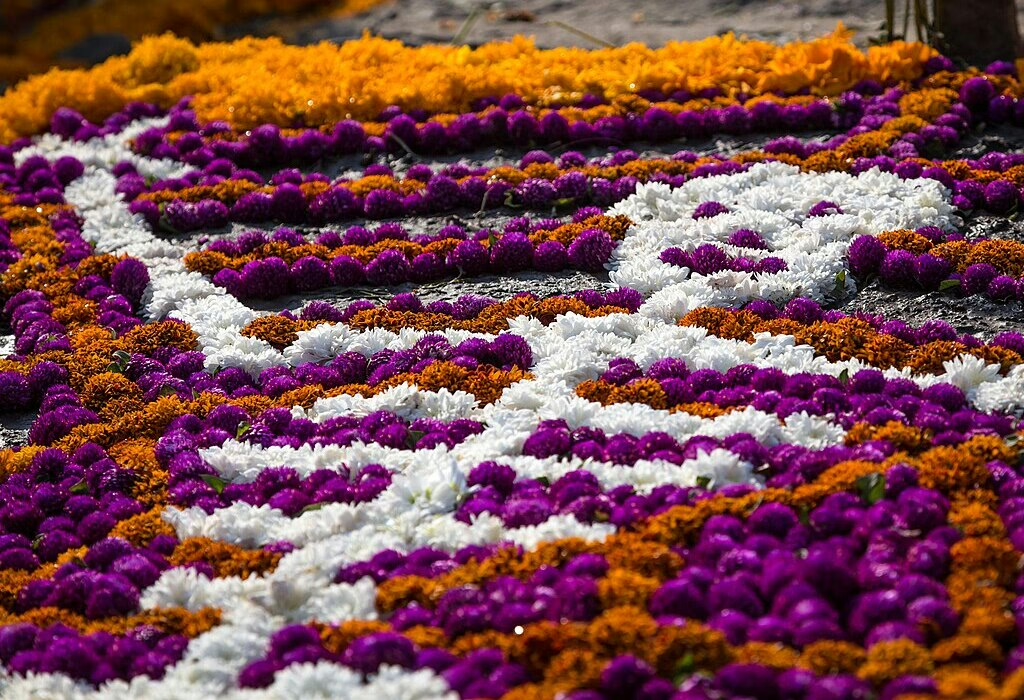
Another reason why Mixquic is so meaningful is the way it unites people.
Families gather, neighbors support each other, and visitors are invited to join in the spirit of the event. Even if you are not from Mexico, you will feel welcomed, as the community shares its customs with kindness. You do not need to understand every symbol or every word; the energy of the place explains itself. It is a celebration that speaks directly to the heart.
For travelers, this is also an opportunity to learn something new about life. Being present in Mixquic during the Day of the Dead teaches patience, gratitude, and appreciation. It shows that traditions are not only part of history books but are alive and growing. Every candle, every song, and every smile adds to the meaning of the event. If you ever have the chance, go and see Mixquic. It will give you a memory that stays forever and a new way to think about life and death.
In Mexico, the way life and death connect is pretty unique. The end of one journey is just the start of another in Mictlán, and it’s a chance to really appreciate the world that’s out there for us. Mixquic is a place where tradition meets artistry, and they celebrate life and death with so much respect and joy. If you want an experience that’s full of tradition, art, and cultural meaning, put Mixquic on your travel list when you head to Mexico!
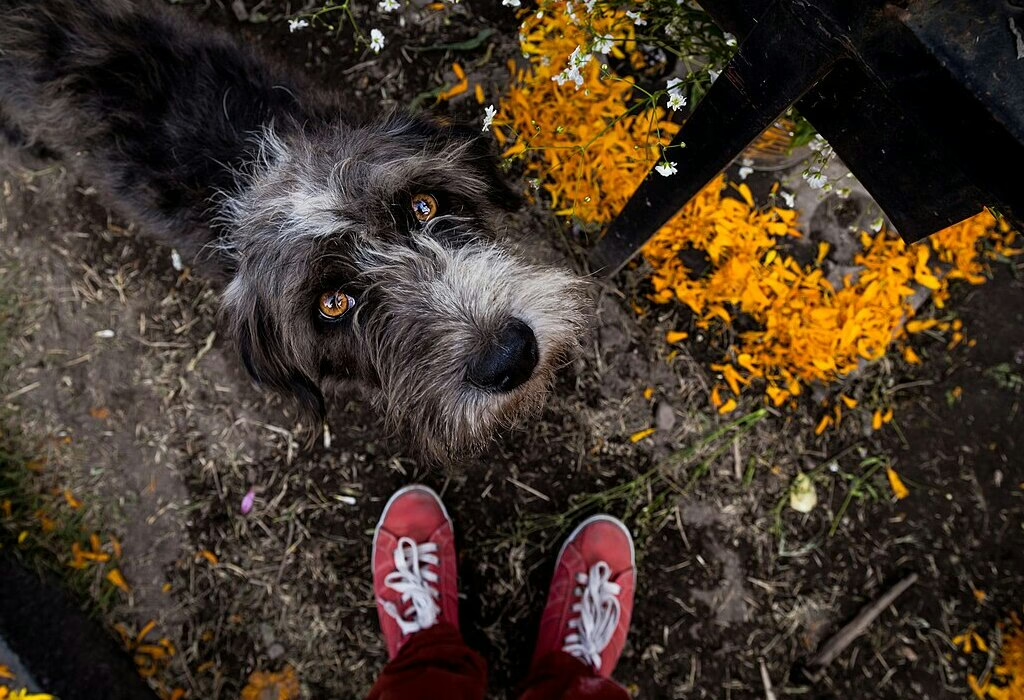
Check out our tours:
- Get scared with terrifying stories in Mexico City.
- Day of the Dead Mexico City Walking Tour (4 h).
- Mixquic: Day of the Dead Tour (9 h).
- Day of the Dead in Ocotepec and more destinations (12 h).
- La Llorona spectacle in Xochimilco canals (6 h).
